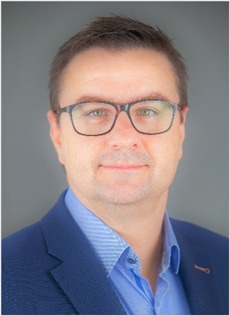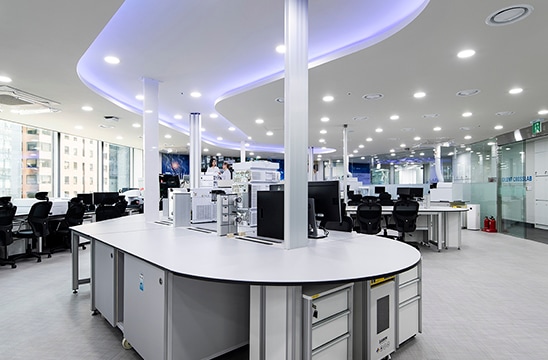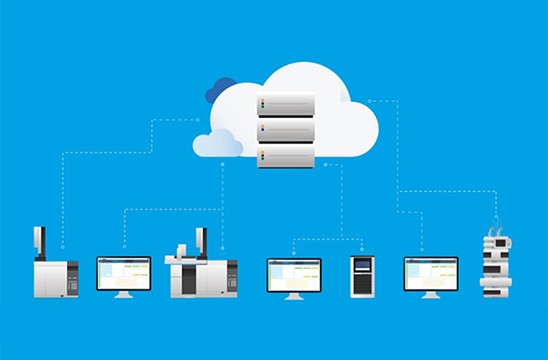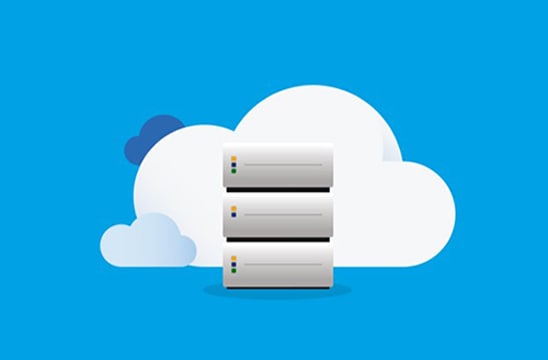In a data-driven era, digitalization in laboratories is becoming more relevant than ever before. The demand for quicker test results, and the need for optimized lab operations are key lab challenges. These challenges are being addressed today by incorporating various digital tools and solutions to improve laboratory workflows. But what does this mean for the future of labs? Three Agilent leadership experts discuss how they envision the visionary lab, and how these digital tools could revolutionize the way scientists work.

Ken Suzuki,
Vice President, Strategic
Program Office, Life Sciences
and Applied Markets Group,
Agilent Technologies

Armin Jehle,
Vice President, EMEAI
Service Business, Customer
Support Organization,
Agilent Technologies

John Sadler,
Vice President and General
Manager, Software and
Informatics Division,
Agilent Technologies
Q: With automation increasing in labs, especially in sample preparation, do you see automated analytical software also becoming a reality?

A: Ken Suzuki: Yes, the overall megatrend we see impacting our customers is the increasing complexity in the scientific answers they need to find. Our customers are analyzing more challenging compounds, with increasing regulations. They have to do more than ever before with their existing staff. Furthermore, in areas such as biopharma, the amount of data being generated grows exponentially, which compounds that challenge. With the growth of AI and machine learning, I see a future where software does more than simply provide an interface between the end user and instruments. Software will also act as a connector between different devices to help our customers create workflows more easily– ultimately helping to analyze their data.
Armin Jehle: Our customers are looking to centralize, standardize, and eventually automate their entire workflow within the lab, right across technologies. Original equipment manufacturers (OEMs) have focused on their own part of the value chain until now. Customers are increasingly looking for something more holistic to support them in managing the entire workflow in a controlled, compliant environment. Automated cross-platform software solutions will be the key to mastering the data to support customers in their mission to deliver sustainable results in ever shorter cycles.
John Sadler: Analytical software, like Agilent OpenLab CDS, is already highly automated in some ways and will become even more so. The software will focus on removing sources of error and automatically capturing the full context of every measurement. Today the error sources include uncontrolled keyboard entries, sample handling and placement, system suitability, training, and reagent and consumable management, among others. There’s a real opportunity for the software to prevent errors from happening. From a systems management perspective, there’s also an opportunity to automate, standardize, and enable secure remote administration and support for lab software. There’s the possibility for a common repository for results so that our customers can get much more value from their lab data, too.
Q: Many labs now incorporate elements of the IoT, particularly in data collection through instrument sensors and other technologies. How do you see this benefiting the visionary lab?

A: Ken: Having a means to monitor instrument activity is clearly one key element to what the future of the analytical lab will look like. By being able to understand what every piece of equipment is doing, combined with intelligence, our customers are essentially moving towards creating a laboratory operating system – a process that controls the lab ecosystem. However, data collection via sensors only tells part of the story. To successfully manage an analytical lab, our customers will also need to pair operational data with a system that is designed to track samples and results. We must also enable our customers to access and manage their data at the workflow and lab enterprise level, independent of the type of instrument and instrument control software that is being used.
Armin: Absolutely, but data collection for the sake of data collection alone is not the goal, although it’s an important first step. Customers are looking for consistent, reliable sources of data. They want to move towards a point where they spend less time questioning the data. Instead, they can focus on evaluating the outcomes to help them make better research decisions. This is particularly true when it comes to operational data. The true benefit of operational data will be a quicker time to better decisions for the lab.
John: IoT technology can greatly simplify the deployment, support, and administration of a fleet of instruments and their associated software. This technology will reduce the cost of ownership and speed up the time to value. IoT can also integrate small lab devices into an integrated workflow allowing the full context of the work to be captured automatically, again reducing cost and waste, and also allowing for data reuse at a later time.
Q: Remote lab work became a reality with the pandemic, enabling scientists to no longer have to be in the lab to conduct some experiments. Do you think remote work will continue and what are the considerations?

A: Ken: COVID-19 has clearly been an accelerator for the transformation of the lab, which was already under way. I believe that the pandemic forced all of us to find new innovative ways to work and has set the ball rolling for lasting changes. If we take a step back, consider what a lab is. A lab is a space that houses our customers’ workflows, provides them a way to manage processes efficiently, as well as enables collaboration. With the advent of remote and digital capabilities, customers decide where to sample, measure, analyze, and collaborate. This work may no longer need to be within the confines of four walls. Couple this capability with the ability to run workflows autonomously, and our customers can now choose where and how to find answers to their scientific challenges.
Other interesting developments are new technologies that bring the analysis to the source of measurement. An example of this new way of working is our production customers who are doing at line testing. They test their samples right on the production line instead of sending them back to the lab.
Armin: The COVID-19 situation can clearly be seen as a catalyst for innovation. Many tasks that had to be performed in the lab only a few months ago, are now no longer tied to the lab. However, it is in the nature of lab work that some tasks have to be done on site and not fully remotely. Yes, certain aspects of data analysis, hypothesis thinking, and documentation will be done remotely more often to support science in the lab. Customers may look to outsource the wet chemistry aspect of lab work to allow their scientists to focus on analyzing results with remote tools. Researchers in scientific fields will collaborate more than they do today as virtual teams, forming clusters of innovation.
Another positive aspect that generally supports the use of remote tools and the deployment of remote work is the sustainability. Reducing the use of resources, such as energy and waste, is becoming increasingly important for many companies.
John: COVID-19 has greatly accelerated the acceptance of remote work as well as remote support and deployment in our customers’ labs. Remote capabilities will definitely continue and will likely expand in some interesting ways. For example, we are seeing interest in using remote work technologies to allow analysts to supervise or review work done in remote labs to improve quality or save travel cost. We’ve also found our own deployment services teams can operate faster and deliver a higher quality experience when working remotely. Replacing travel time with secure remote access means that more expertise can be brought to solve a problem quickly. Remote work hinges on strong security, and we have been leading in this area at Agilent with security practices built into our product life cycle.
Q: In addition to remote lab work, there could be a shift towards a more flexible style of working, incorporating greater work-life balance. What do you think this would look like for scientists?

A: Ken: Extending on my previous example, let’s understand the basics of a workflow. You prepare the sample (or bring the sample to the source of measurement), measure, analyze the data, and then collaborate on the results. The need to have every step occur in a fixed physical location to manage the equipment and workload has been a key driver in determining the work-life balance for many researchers. If you can separate these four steps and enable different ownership models where the scientists focus on the science (not operation), the landscape changes significantly. In this future, a scientist could design and run a workflow and collaborate with their peers from any location at any time that they want.
Armin: Scientists are no different from anyone else who wants a good work-life balance. Scientists or researchers systematically deal with scientific questions. They have the ability to work independently and the actual research work is what drives them. Increasing the flexibility of the world of work and its working models helps scientists to focus on the essentials. Scientists can work more efficiently and independently of location. They can also collaborate effectively with scientists and colleagues around the world.
John: A great work-life balance starts with lab systems embracing remote work and improving automation to eliminate errors and work that do not require human expertise. As a simple example, imagine setting up a long run and having the system tell you how much reagent it will need to finish it. Then, imagine leaving the lab and having the system keep you up to date by SMS on the progress of the run. As an analyst, you might also review and approve measurements remotely without having to commute to the lab, saving time and giving you more flexibility.
Q: Great science has often occurred due to great collaboration between multidisciplinary teams within a common space. How would the visionary lab accommodate continued collaboration with dispersed teams?

A: Ken: While we often talk a lot about connectivity and digital, these are simply a means to a more efficient end. New instrument technologies can be combined with cloud analytics, machine learning, automation, and ownership models. The digital and connected lab allows scientists to focus on their core competitive differentiation. They are now able to research, design, develop, and commercialize regardless of what region or time-zone they reside in.
Armin: In the future, we will move away from talking about a physical shared space where employees work together. Cloud solutions, virtual reality, and other digital solutions will define the workplace of the future. This technology will further improve effective collaboration and shorten the duration of projects. However, the balance between the digital world and the real laboratory environment must not be underestimated. The effective combination of both worlds will be the most efficient solution.
John: Many labs already collaborate with other labs or distribute work to other companies. However, their data flow isn’t always secure or automated. We have an opportunity to design collaboration into our lab data systems so that distributed teams can collaborate securely and completely, while respecting ownership of results. Agilent OpenLab and SLIMS already support some distributed collaboration models and will support more in the future.
Agilent understands the evolving needs of scientists and is making investments in technologies and skills to support their needs today and in the future. If you are interested in discussing your vision for your lab, contact us today.